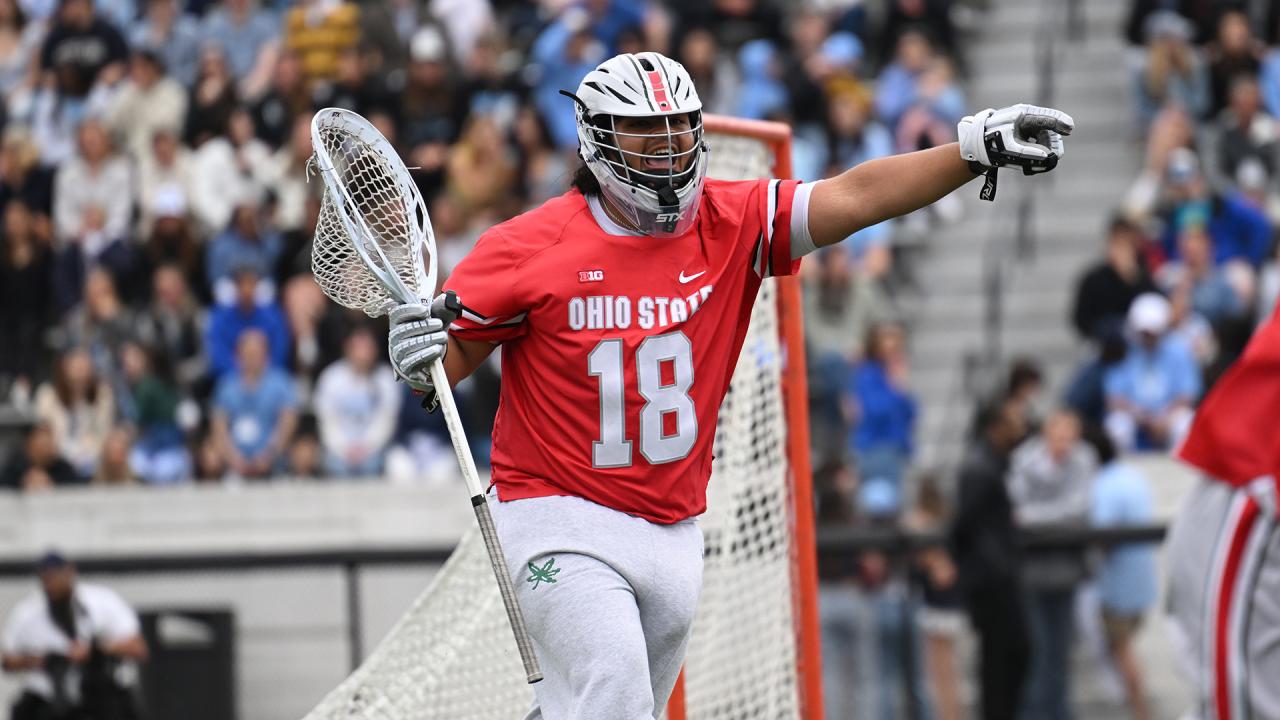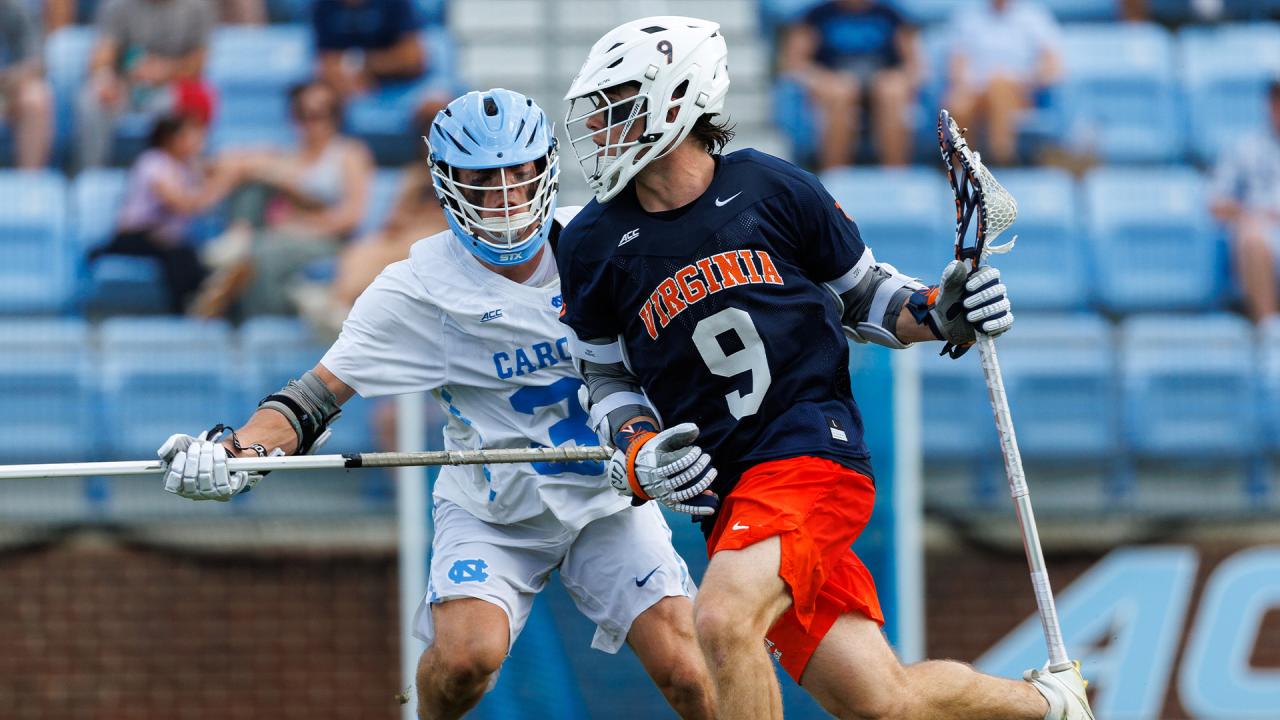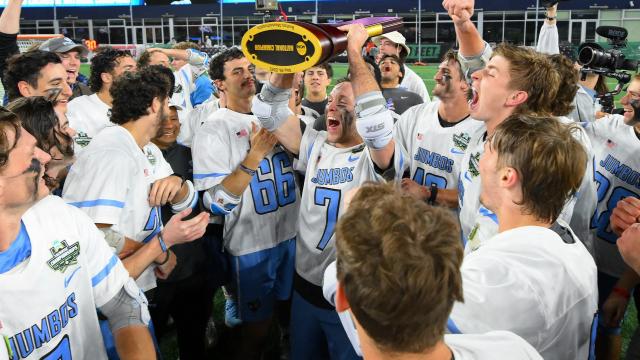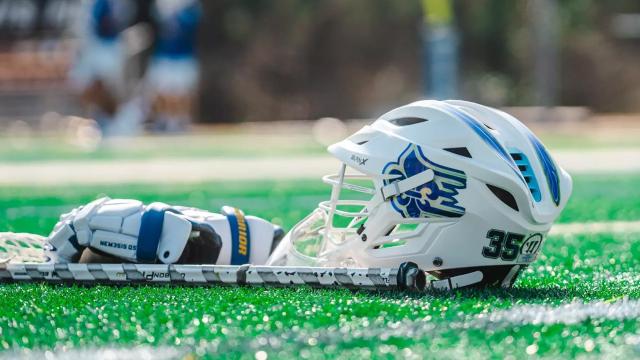
Way-Early 2026 Division I Men's Rankings: 15-11
USA Lacrosse Magazine’s Way-Early look toward 2026 reaches its midpoint and starts out with three teams that have played in the NCAA quarterfinals within the last four seasons — though none of them advanced to the postseason last spring. Up next: Nos. 15-11.
Previously: Nos. 25-21 | Nos. 20-16
15. RUTGERS
2025 record: 7-9 (2-3 Big Ten)
Last seen: Rather predictably playing a game in which neither team got to a dozen goals. The Scarlet Knights’ 11-7 loss to Ohio State in the Big Ten semifinals was the 12th time in 16 games that neither team got past 11.
Projected starts lost: 70 of 160 (43.8 percent)
Projected scoring departing: 76 of 232 points (32.8 percent)
Initial forecast: The Scarlet Knights know who their biggest offensive threat will be and they have a dynamo at goalie. It’s a pretty good place to start. Colin Kurdyla (27G, 13A) could see a significant uptick in production if the rest of the offensive cast makes strides, either through normal career progressions or with a scheme revamp under new coordinator (and program alum) Scott Bieda. Cardin Stoller played in front of a veteran close defense and stopped 56.7 percent of the shots on goal he faced in his second year as a starter. Rutgers had to be stingy given its offensive limitations, and now it must replace all three starting defensemen (though long pole Ryan Splaine remains in the fold). So things will be different on the banks of the Raritan, but there’s still a bit more continuity here than most Big Ten precincts. There’s clearly some upside at Rutgers, and a best-case scenario would see it vaulting back into NCAA tournament contention after missing the postseason the last three seasons. A more mundane year would involve climbing back over .500 and finding an improved rhythm on offense.
14. ARMY
2025 record: 12-2 (7-1 Patriot)
Last seen: Giving up six goals in the fourth quarter of a 16-13 loss to Colgate in the Patriot League semifinals, the second consecutive year the Black Knights tripped up as the top seed in their first game in the conference tournament.
Projected starts lost: 50 of 140 (35.7 percent)
Projected scoring departing: 143 of 338 points (42.3 percent)
Initial forecast: The stats above undersell the exodus that came with the graduation of the Black Knights’ 22-man senior class. It isn’t hard to quantify the impact Tewaaraton Award finalist Jackson Eicher (54G, 31A) had; doing so for the likes of defenseman AJ Pilate, long pole Christian Fournier, ace short stick Christian Mazur and (to a lesser extent) faceoff maestro Will Coletti is more difficult. Yet there’s still a lot of cohesion returning at the offensive end, with Brayden Fountain (35G, 16A) coming off a stellar freshman year and longtime fixtures Gunnar Fellows (35G, 15A) and Evan Plunkett (14G, 16A) back for their senior seasons as the recently promoted Rick Lewis takes over as offensive coordinator. Sean Byrne (.607 save percentage) will have a lot of new starters around him on defense, and the trite insight here would be to suggest the defense will need time to coalesce. But when was the last time defense was a vulnerability under Joe Alberici? Expect Army to be right at the top of the Patriot League and be especially incentivized once the league tournament arrives in May.

13. VIRGINIA
2025 record: 6-8 (0-4 ACC)
Last seen: Falling in overtime to Duke on April 26, a trying season ending a full month before Memorial Day
Projected starts lost: 75 of 140 (53.8 percent)
Projected scoring departing: 88 of 251 points (35.1 percent)
Initial forecast: The Cavaliers are going to be one of the most fascinating — and undoubtedly one of the most scrutinized — teams once February arrives. Virginia never figured things out last season, whether due to injuries, a lack of cohesion or simply not having a suitable replacement for a face-of-the-program like Connor Shellenberger that most teams are fortunate to come across once a decade. The starting attack returns, with Truitt Sunderland (32G, 19A) entering his second year as a starter, and McCabe Millon (14G, 13A) entering his third year in the lineup. Millon must improve on a 19.7-percent shooting performance, but Virginia needs to develop better midfield options to take pressure off its attack group. Kyle Morris (.506 save percentage in eight games) would seem to be the first in line to take over for the graduated Matthew Nunes in goal, while the single best thing to come out of last year for Virginia was John Schroter’s emergence as a lockdown defender. There are redshirt freshmen on the mend and the usual loaded recruiting class that Lars Tiffany brings in every season. How it all fits together remains to be seen, only that it almost has to function better than last spring … right?
12. HARVARD
2025 record: 10-5 (4-2 Ivy)
Last seen: Falling in overtime at Syracuse in the first round of the NCAA tournament after the Orange erased a six-goal deficit in the second half (and a five-goal hole in the fourth quarter).
Projected starts lost: 46 of 150 (30.7 percent)
Projected scoring departing: 113 of 326 points (34.7 percent)
Initial forecast: As much attention as graduated Tewaaraton finalist Sam King (37G, 29A) rightfully generated, there were some really good pieces around him. The Crimson brings back four of their top five scorers, including Jack Speidell (46G, 13A, .430SH%), Teddy Malone (31G, 18A), Logan Ip (23G, 15A) and John Aurandt IV (15G, 11A). That group alone will give Harvard a superb chance of reaching back-to-back NCAA tournaments for the first time in program history. But as the Crimson’s 2025 postseason experience illustrated, possession is required to score (the occasional fluke own-goal aside), and eventually someone is going to take you up on the chance to go on a run when faceoff play is a vulnerability. Harvard ranked 74th out of 77 Division I teams in faceoff percentage at .376, but it wasn’t a one-time issue. The Crimson haven’t finished above 45 percent on faceoffs since 2018 (.466) and haven’t cracked 50 percent for a season since 2013. Harvard made up for these problems to some extent by leading the country in forced turnovers (11.67 per game), but a little more possession could still go a long way for a team that shouldn’t have trouble piling up goals most days.
11. OHIO STATE
2025 record: 14-3 (4-1 Big Ten)
Last seen: Having what had been to that point a dream season end with a 15-6 loss to Notre Dame in the first round of the NCAA tournament.
Projected starts lost: 85 of 170 (50 percent)
Projected scoring departing: 233 of 326 points (71.5 percent)
Initial forecast: What a curious setup there will be in Columbus in 2026 as the Buckeyes come off winning the Big Ten regular season and tournament titles for the first time. There might not be a team in Division I with a better defensive core than Ohio State. In addition to first-team All-American goalie Caleb Fyock (.612SV%), the Buckeyes also have defensemen Cullen Brown (34CT) and Bobby Van Buren back along with proven short stick Blake Eiland. But it’s anyone’s guess what the offense is going to look like, simply because it was so senior-heavy last season. Garrett Haas (29G, 17A) is the only player among Ohio State’s 20-point scorers from last year who wasn’t a senior or a graduate student, and the only other top-tier program that saw so much raw production depart was Cornell. Some help is on the way from the portal, with Brad Sharp (13G, 12A at Yale) and Jackson Birtwistle (27G in 2023; 12G, 2A in 2024 at Syracuse) arriving with extensive midfield experience. It’ll be an interesting challenge for new offensive coordinator James Purpura as the Buckeyes chase back-to-back NCAA tournament berths for the first time since 2003-04. Don’t be surprised if many Ohio State games are de facto races to 10 goals (OK, maybe not races), with the real possibility there are some 8-6s and 9-7s sprinkled in as well.
Patrick Stevens
Patrick Stevens has covered college sports for 25 years. His work also appears in The Washington Post, Blue Ribbon College Basketball Yearbook and other outlets. He's provided coverage of Division I men's lacrosse to USA Lacrosse Magazine since 2010.

Categories
Tags
Related Articles




